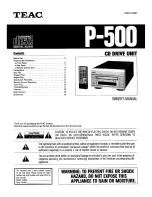
SV9000
Motor Pump Enhanced Protection Application
Page 29 (60)
4.6
Start function
Ramp:
0
The frequency converter starts from 0 Hz and accelerates to the set reference
frequency within the set acceleration time. (Load inertia or starting friction may cause
prolonged acceleration times).
Flying start:
1
The frequency converter is able to start into running motor by applying a small torque
to motor and searching for frequency corresponding to the speed the motor is
running at. Searching starts from the maximum frequency towards the actual
frequency until the correct value is detected. Thereafter the output frequency will be
accelerated/decelerated to the set reference value according to the set
acceleration/deceleration parameters.
Use this mode if the motor is coasting when the start command is given. With the
flying start it is possible to ride through short utility voltage interruptions.
4.7
Stop function
Coasting:
0
The motor coasts to a halt without any control from the frequency converter, after the
Stop command.
Ramp:
1
After the Stop command, the speed of the motor is decelerated according to the set
deceleration parameters. If the regenerated energy is high it may be necessary to
use an external braking resistor for faster deceleration.
4.8
DC-braking current
Defines the current injected into the motor during the DC braking.
The DC braking current can be reduced from the setpoint with an external free analog
signal, see parameters 2.15 and 2.16.
4.9
DC-braking time at Stop
Defines if braking is ON or OFF and the braking time of the DC-brake when the motor is
stopping. The function of the DC-brake depends on the stop function, parameter 4.7. See
figure 6.2-14.
0
DC-brake is not used
>0
DC-brake is in use and its function depends on the Stop function, (param. 4.7), and
the time depends on the value of parameter 4.9:
Stop-function = 0 (coasting):
After the stop command, the motor coasts to a stop without any control from the
frequency converter.
With DC-injection, the motor can be electrically stopped in the shortest possible time,
without using an optional external braking resistor.
The braking time is scaled according to the frequency when the DC-braking starts. If
the frequency is >nominal frequency of the motor (par. 1.11), setting value of
parameter 4.9 determines the braking time. When the frequency is <10% of the
nominal, the braking time is 10% of the set value of parameter 4.9. See figure 6.2-14.
















































